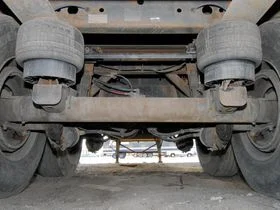අගෝ. . 01, 2024 09:41 Back to list
Optimizing the Adjustment Process of OEM Fifth Wheel Plates for Enhanced Performance and Safety
Understanding OEM Fifth Wheel Plate Adjustment
The fifth wheel hitch is an essential component in the towing of heavy trailers by trucks. Primarily used in the automotive and transportation industries, the fifth wheel connection allows for a secure attachment between a truck and a trailer while providing the flexibility required for maneuvering and turning. One of the critical aspects of maintaining and optimizing the performance and safety of this system involves proper adjustment of the OEM (Original Equipment Manufacturer) fifth wheel plate. In this article, we will explore the significance of this adjustment, methods for achieving proper alignment, and the benefits it brings to towing operations.
The Importance of Fifth Wheel Plate Adjustment
The fifth wheel plate serves as the pivot point for the trailer, enabling it to articulate as it turns and navigates corners. Improper alignment can lead to numerous issues, including excessive wear on both the trailer and the truck, unstable towing dynamics, and even dangerous situations while driving. When the fifth wheel plate is incorrectly adjusted, it can result in an uneven weight distribution, causing the truck to handle poorly and increasing the risk of accidents. Furthermore, misalignment can affect braking performance, particularly in heavy loads, as the weight transfer may not be optimal.
Methods for Adjusting the Fifth Wheel Plate
1. Check Manufacturer Specifications Start by consulting the vehicle and fifth wheel hitch manufacturer’s guidelines. These documents provide critical information on the correct height and alignment specifications that must be adhered to for optimal performance.
2. Adjusting the Height The fifth wheel plate height should align with the kingpin on the trailer. Use a leveling tool to ensure that the fifth wheel is level with the trailer when attached. Adjust the height by modifying the mounting hardware settings or, in some cases, adding or removing spacers from the base of the plate.
3. Ensure Proper Clearance After adjusting the height, check for proper clearance. There should be enough space between the truck bed and the trailer’s roof to allow for swift turning without potential collisions. Maintain at least five to six inches of clearance.
oem fifth wheel plate adjustment

4. Check Lateral Alignment Ensure that the fifth wheel plate is centered over the truck’s rear axle. Side-to-side misalignment can lead to poor trailer handling. Adjust the mounting position until the plate is aligned appropriately.
5. Regular Inspections After the initial adjustment, it's essential to conduct regular inspections of the fifth wheel plate and its components. Look for signs of wear, rust, or loose fittings, and address any issues promptly.
Benefits of Proper Adjustment
Maintaining the correct fifth wheel plate adjustment offers several benefits. Firstly, it enhances the overall safety of the towing vehicle and trailer. Proper alignment ensures that weight is distributed evenly, minimizing the risk of sway and improving stability, especially in adverse weather conditions.
Secondly, it leads to better fuel efficiency. When the trailer is properly aligned, the aerodynamic drag is reduced, resulting in lower fuel consumption during transportation. Additionally, regular adjustments can prolong the life of the fifth wheel hitch and trailer, reducing maintenance costs and the need for replacements.
Finally, a correctly adjusted fifth wheel plate allows for a more comfortable driving experience. Drivers can maneuver more easily and confidently when they know that their equipment is functioning optimally.
Conclusion
In conclusion, the adjustment of the OEM fifth wheel plate is a critical aspect that should not be overlooked in the towing process. By adhering to manufacturer guidelines, ensuring proper alignment, and conducting regular maintenance, drivers can significantly enhance their towing safety, efficiency, and overall driving experience. Proper adjustment contributes to safer roads and more successful transportation outcomes for all.
-
JOST TAPE Fifth Wheel 37C Repair Kits-Premium Trailer Parts&Durable Fifth Wheel Repair Solutions
NewsAug.06,2025
-
Heavy-Duty American Type Welding Series Suspension
NewsAug.06,2025
-
JOST TAPE Fifth Wheel 37C Repair Kits- Shijiazhuang Land Auto Component Ltd.|Durability&Compatibility
NewsAug.05,2025
-
JOST TAPE Fifth Wheel 37C Repair Kits-Shijiazhuang Land Auto Component Ltd.|Durability&Compatibility
NewsAug.05,2025
-
Premium 5th Wheel Bumper Kit - Durable & Easy Install
NewsAug.05,2025
-
Air Suspension Series: AI-Optimized Comfort & Performance
NewsAug.04,2025
